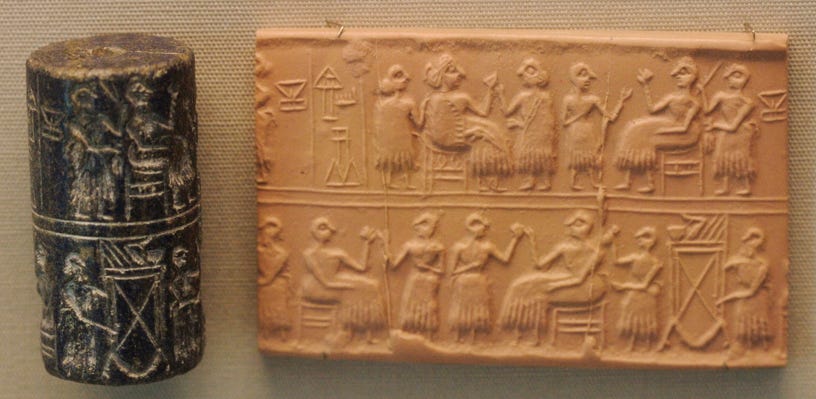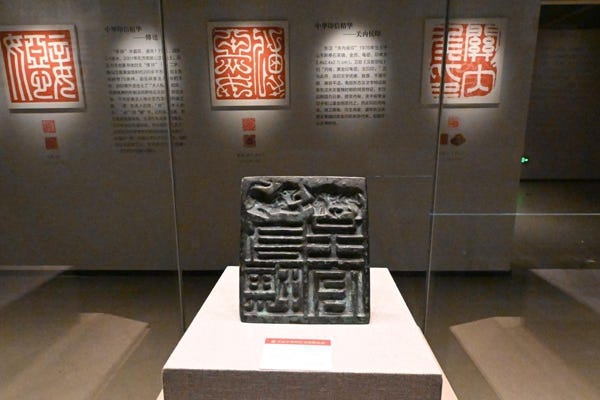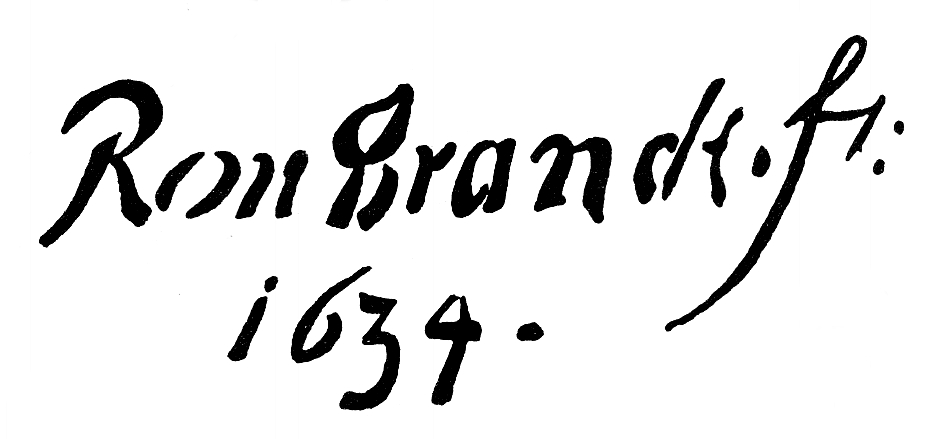This Article is a ChatGPT response to the question What is the history of the Signature? based on a this little bit of conversation in the comments of The Signature of a Line The first part is about the signature in general and the second part is about the signature in the arts.
Annette Wilzig
My first thought was how when one is young (and many have done this) they practice their actual signature many times over to see how 'cool' it can be. I like that you referred to this style as a 'signature' and how different viewers will most likely interpret it so very differently than intended by the artist (as is true of all art and poetry).
Cecil Touchon
Practicing your signature. Yes I remember that. It is almost like a person's first conscious and truly personal expression in a way that has to be practiced over and over again until it feels authentic to you.
The History of the Signature
The history of the signature is fascinating and spans thousands of years, evolving alongside human communication, commerce, and law. Here's an overview of its development:
Ancient Origins

Mesopotamia (circa 3100 BCE):
The earliest precursors to signatures appeared in the form of cylinder seals. These small cylindrical objects were engraved with unique designs or inscriptions and rolled onto clay to mark ownership or authenticate documents.
These seals were used for contracts, ownership records, and administrative purposes.
Egypt (circa 2000 BCE):
Scribes and officials often used hieroglyphs or personal marks to signify identity on official documents. These served as an early form of individual authentication.
China (circa 1600 BCE):
In ancient China, personal seals carved with unique symbols (chops) were dipped in ink and stamped on documents. This practice remained central to authentication in East Asian cultures for centuries.
Classical Antiquity
Greece and Rome (circa 500 BCE–500 CE):
Greeks and Romans used written names or symbols to authenticate documents. Roman contracts and wills often required witnesses to include their names or personal marks.
For those who were illiterate, a simple "X" or other mark was acceptable.
Wax Seals (circa 200 CE):
Wax seals impressed with unique signet rings or stamps became a popular method of authentication, especially in Europe. These seals indicated the signer's identity and ensured the integrity of the document.
Medieval Europe (500–1500 CE)
Signatures in Manuscripts:
During the medieval period, illuminated manuscripts and other important documents often featured signatures or monograms by scribes or authors.
Nobles and monarchs signed royal decrees and treaties, often accompanied by elaborate seals.
Rise of Surnames:
By the Middle Ages, as surnames became widespread, signatures began to include both first and last names, adding clarity and individuality.
Renaissance and Early Modern Period (1500–1700)
Standardized Legal Use:
The Renaissance brought increased literacy and legal formalization. Signatures became essential for contracts, treaties, and personal correspondence.
Signatures were sometimes accompanied by flourishes or marks to deter forgery.
Declaration of Independence (1776):
The practice of signing important documents reached symbolic heights with the U.S. Declaration of Independence, where signers' signatures represented personal commitment to the document.
Modern Era (19th–21st Century)
Global Standardization:
With the spread of democracy and capitalism, signatures became a global norm for validating identity in business, law, and personal matters.
Digital Signatures (late 20th century):
The rise of computers and the internet introduced electronic and digital signatures, which use cryptographic methods to ensure security and authenticity in online transactions.
Biometric Signatures:
Advanced technologies now use biometrics like fingerprints or retinal scans as a modern "signature," offering a unique and secure means of authentication.
Cultural and Symbolic Significance
Throughout history, signatures have symbolized individuality, authority, and accountability. They reflect cultural variations: in some cultures, seals are more common than written names, while in others, unique handwriting is valued.
The signature's journey reflects humanity's ongoing need to verify identity and secure agreements, adapting to technological and social advancements over time.
The Signature in the Arts
In the arts, the history of the signature carries its own distinct evolution, closely tied to the development of artistic identity, authorship, and the perception of art as a unique creation. Here’s an exploration of how signatures have functioned in the arts:
Ancient and Classical Art
Early Anonymous Artists:
In ancient Egypt, Mesopotamia, and Greece, art was often created anonymously as part of collective or commissioned efforts. Artisans were considered craftsmen rather than individual creators.
Rarely, artists would sign their works in subtle ways, such as small inscriptions or marks. For instance, Pottery in Ancient Greece sometimes bore the names of potters or painters like Exekias, who signed vases.
Signatures as Inscriptions:
Artists in ancient Rome occasionally signed sculptures, mosaics, or frescoes, often as part of dedicatory inscriptions indicating the patron or creator.
For example, the Roman mosaicist Sosus of Pergamon signed his work, including the famous Unswept Floor mosaic.
Medieval Period (5th–15th Century)
Religious Art and Anonymity:
During the medieval era, art was primarily religious, created to glorify God rather than the artist. As a result, most works remained unsigned.
Exceptions included rare inscriptions by scribes or illuminators in manuscripts, such as those in The Book of Kells, often noting their names humbly.
Marks and Monograms:
Some artisans, especially in guilds, began using symbols or monograms to identify their work, particularly on crafts like stained glass or metalwork.

Renaissance (14th–17th Century): The Rise of Artistic Identity
Emergence of the Artist’s Signature:
The Renaissance marked a shift toward individualism and the celebration of the artist as a creative genius. Artists began signing their works to assert authorship and elevate their status.
Famous Examples:
Michelangelo signed his Pietà prominently on Mary’s sash, a rare instance of such visibility in sculpture.
Albrecht Dürer, a Northern Renaissance artist, used his monogram “AD” as a hallmark of his prints and paintings.
Subtlety and Symbolism:
Artists sometimes integrated their signatures as part of the composition. For example, Jan van Eyck inscribed "Johannes de Eyck fuit hic" (Jan van Eyck was here) in his Arnolfini Portrait.
Baroque to Romantic Era (17th–19th Century)
Increasing Prominence:
As art markets expanded, signatures became more common and visible, serving as both a mark of authenticity and a selling point.
Rembrandt often signed his works with his first name, emphasizing his brand as a master artist.
Signatures and Style:
Some artists, like Francisco Goya, adapted their signatures to match their artistic evolution, reflecting their changing identity.
Romanticism and Beyond:
During the Romantic era, artists like J.M.W. Turner began to include signatures in ways that highlighted their individuality and emotional connection to the work.
Modern and Contemporary Art (20th–21st Century)
Abstract Expressionism and Minimalism:
In movements like Abstract Expressionism, some artists, such as Jackson Pollock, eschewed signatures altogether, as their work was more about universal ideas than individual identity.
Others, like Mark Rothko, signed discreetly to maintain focus on the artwork itself.
Playful and Subversive Signatures:
Contemporary artists often challenge the notion of the signature:
Marcel Duchamp famously signed a urinal "R. Mutt" in his artwork Fountain (1917), questioning authorship and what constitutes art.
Street artists like Banksy use pseudonyms, stencils, or symbols instead of traditional signatures to maintain anonymity and provoke thought.
Digital and Conceptual Art:
In digital art, signatures may appear as watermarks, metadata, or blockchain entries in NFTs (non-fungible tokens), reflecting a modern approach to authenticity.
Cultural and Symbolic Role
Artistic Identity:
A signature in the arts often signifies not just authorship but also the artist's statement, branding, or connection to a broader movement.
Mystery and Intrigue:
Unsigned works often carry intrigue, inviting scholars and historians to debate their provenance and attribution, as seen in disputes over works attributed to Leonardo da Vinci or Caravaggio.
From a simple mark to a powerful symbol of artistic identity, the signature in art has evolved into a multifaceted element that intertwines creativity, authorship, and meaning.






Interesting. Here in Japan, individual seals ("hanko") are still used for certain transactions.
This was a fascinating read. The idea of leaving one's Mark on something.......look at graffiti and how they 'tag' property to show who the 'ownership' of said tag is. I always sign my last name and year piece was made (Wilzig '24) on every one, usually with a sharpie or with an engraver but that's rare. My father would sign his paintings very much as Albrecht Durer did with his initials with the 'A' on top of the 'W' (we had the same initials). Signing one's art completes it in my opinion and lets one know who made it. Look at the clothes designers who blast their initials, names, symbols all over the place (yuk). I bought this really amazing old painting at a thrift store but there was no signage anywhere on it which has me more curious about it yet looks like an 'important' piece done in the 40s or 50s. Thanks for the article Cecil!